The Large Hadron Collider with my own eyes. Part 3
I will continue my story about visiting the open day at CERN.
First part here
Second part here
')
Part 3. Computing Center.
In this part I will tell you about the place where what is the product of CERN is stored and processed - the results of experiments. It will be about the computer center, although it is more correct, probably, to call it a data center. But first, I’ll touch on the computation and data storage issues of CERN. Each year, the Large Hadron Collider alone produces such a large amount of data that if you record it on a CD, you will get a stack 20 kilometers high. This is due to the fact that during the operation of the collider, beams collide 30 million times per second, and each collision causes approximately 20 events, each of which produces a large amount of information in the detector. Of course, this information is processed first in the detector itself, then it goes to the local computing center and only then is transmitted to the main data storage and processing center. However, it takes about a petabyte of data each day. To this we must add the fact that this data must not only be stored but also distributed among research centers around the world, and in addition, it is necessary to maintain approximately 4,000 WiFi network users in CERN itself. It is necessary to add that there is an auxiliary data storage and processing center in Hungary, with which there is a 100 gigabit link. At the same time inside CERN laid 35,000 kilometers of optical cable.
However, such a powerful computer center was not always. The photo shows how the equipment used has changed over time.

Now there has been a transition from mainframe to conventional PC grid. Currently, the center has 90,000 processor cores in 10,000 servers, which operate 24 hours a day, 7 days a week. On average, this grid has 25000 data processing tasks simultaneously. This computing center is at the peak of modern technology and, often, moves computing equipment and IT forward to solve the tasks necessary to store and process such large amounts of data. It is enough to mention that the building located not far from the computing center Tim Berners-Lee was invented by the World Wide Web (tell thoseidiots who are alternatively gifted, who, sitting on the Internet, say that fundamental science is not good).
But back to the problem of data storage. The photograph shows that in theantediluvian times, data was previously stored on magnetic disks (Yes, yes, I remember these disks of 29 megabytes on an EU computer).
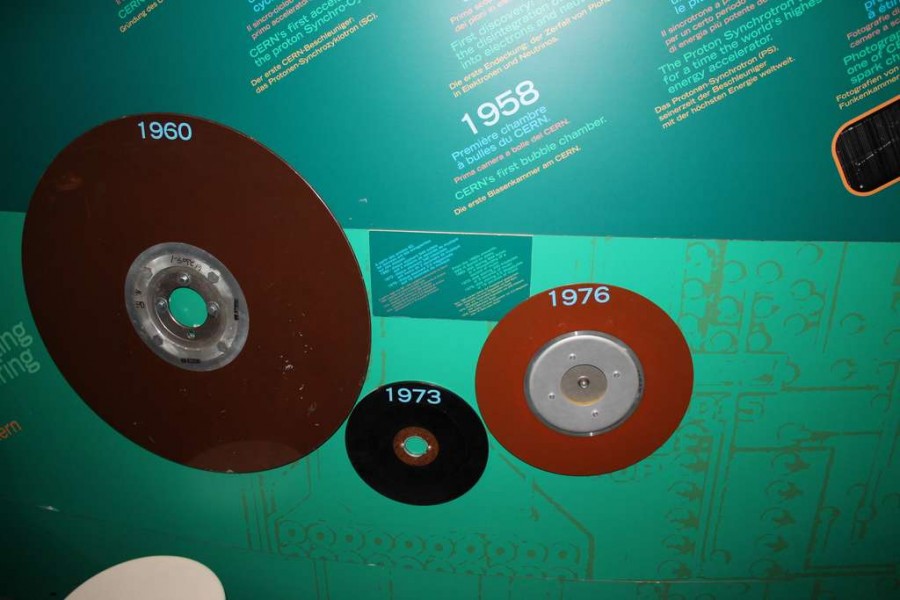
To see how things are going today, I go to the building where the computing center is located.
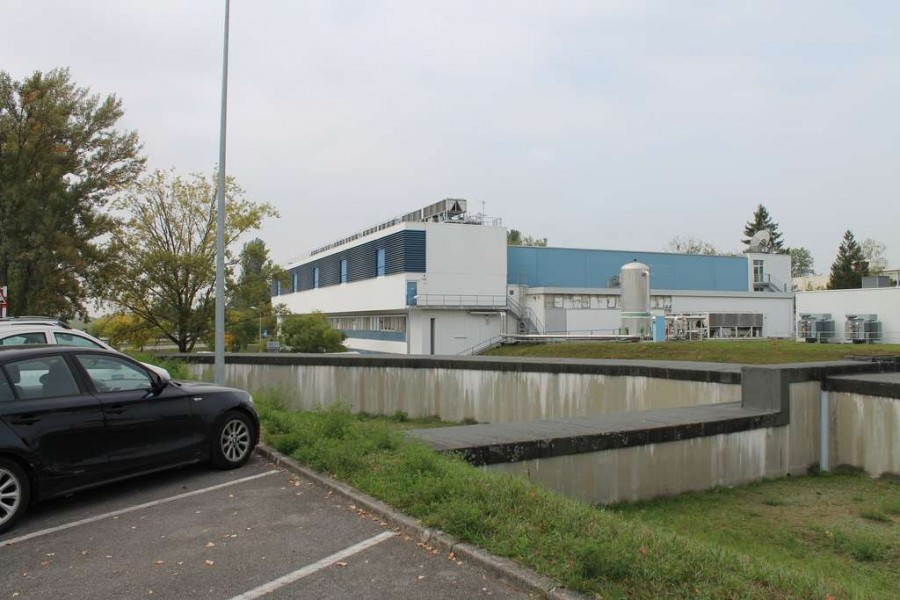
Surprisingly, there are not very many people there, and I rather quickly go inside. We are shown a small film, and then lead to a locked door. Our guide opens the door and we find ourselves in a fairly large room where there are cabinets with magnetic tapes, on which information is recorded.
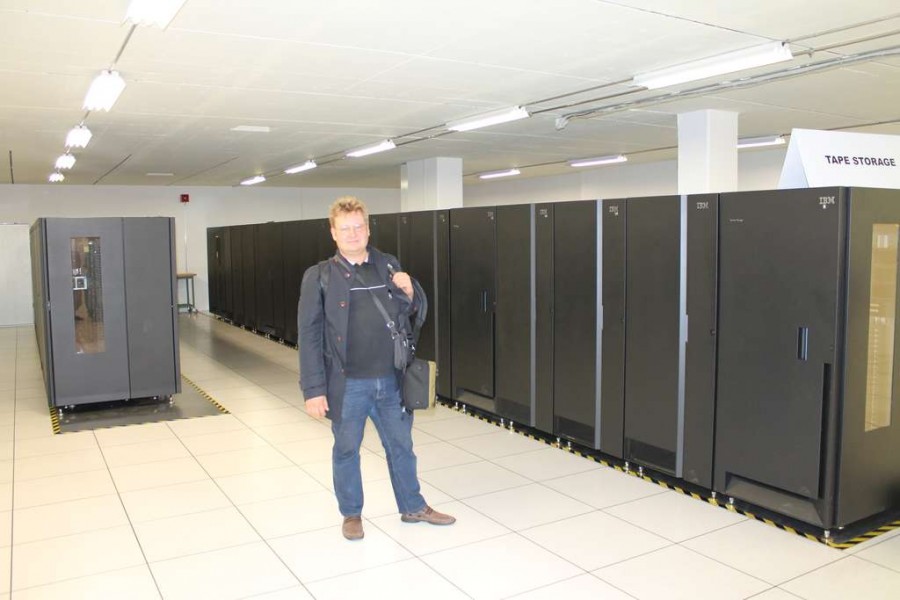
Most of the hall is occupied by these same closets.
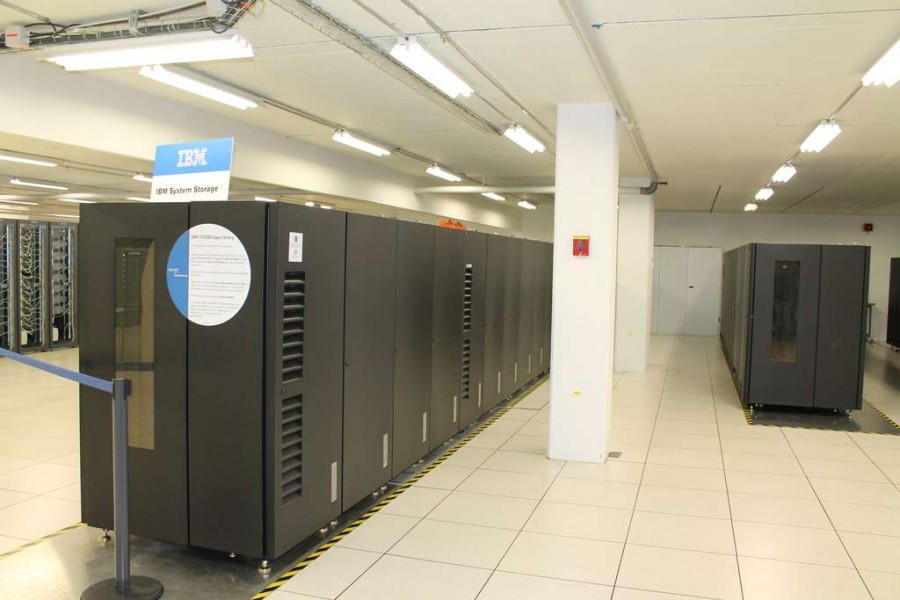
They contain about 100 petabytes of information (equivalent to 700 years of Full HD video) in 480 million files. Interestingly, approximately 10,000 physicists around the world have access to this information at 160 computing centers. This information contains all the experimental data since the 70s of the last century. If you take a closer look, you can see how these magnetic tapes are located inside the cabinets.
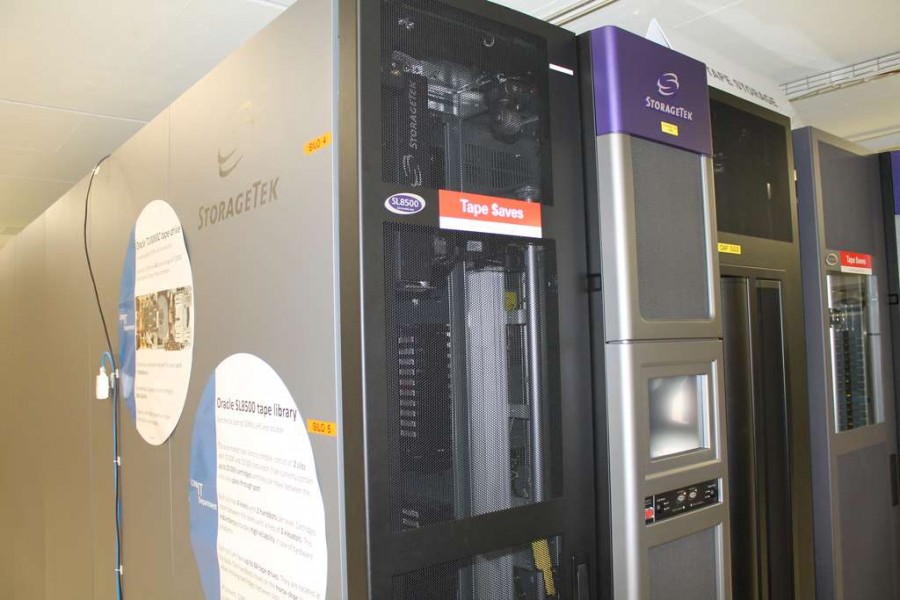
Some racks are processor modules.
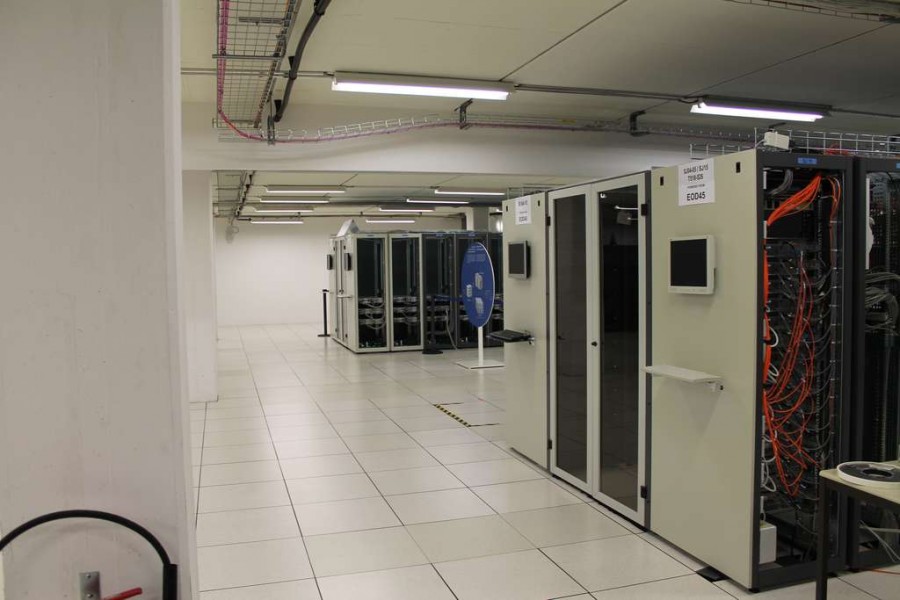
On the table is a small exhibition of what is used to store data.
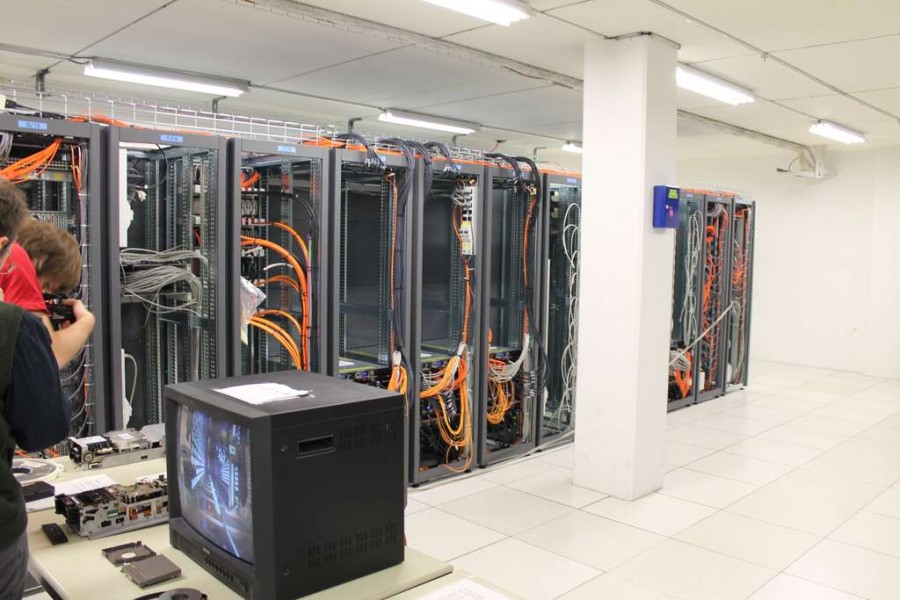
This computing center consumes 3.5 megawatts of electrical energy and has its own diesel generator in case of a power outage. I must also say about the cooling system. It is located outside the building and drives the cold air under the raised floor. Water cooling is used on only a small number of servers.
If you look inside the cabinet, you can see how the automatic sampling and loading of magnetic tapes takes place.
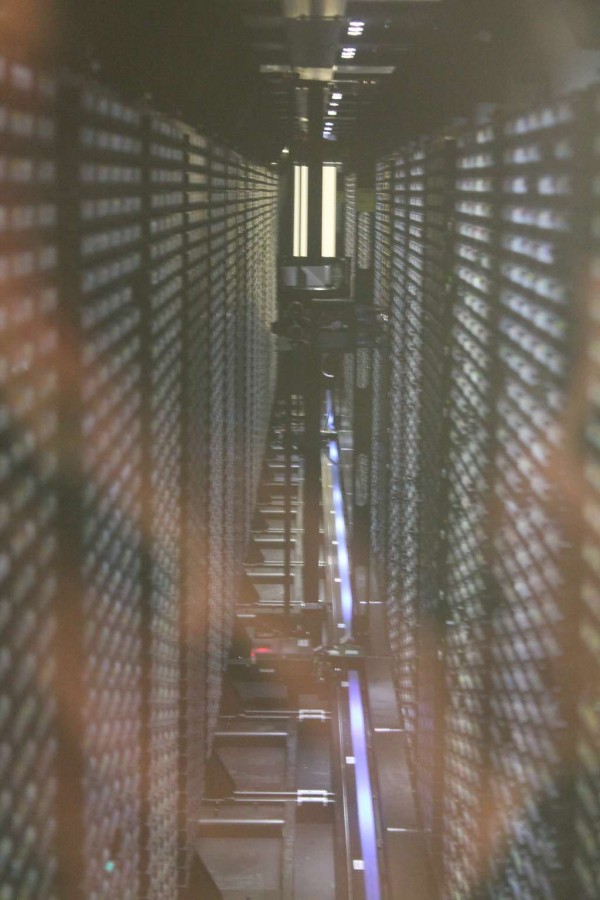
Going further, you can see the rack with other equipment.
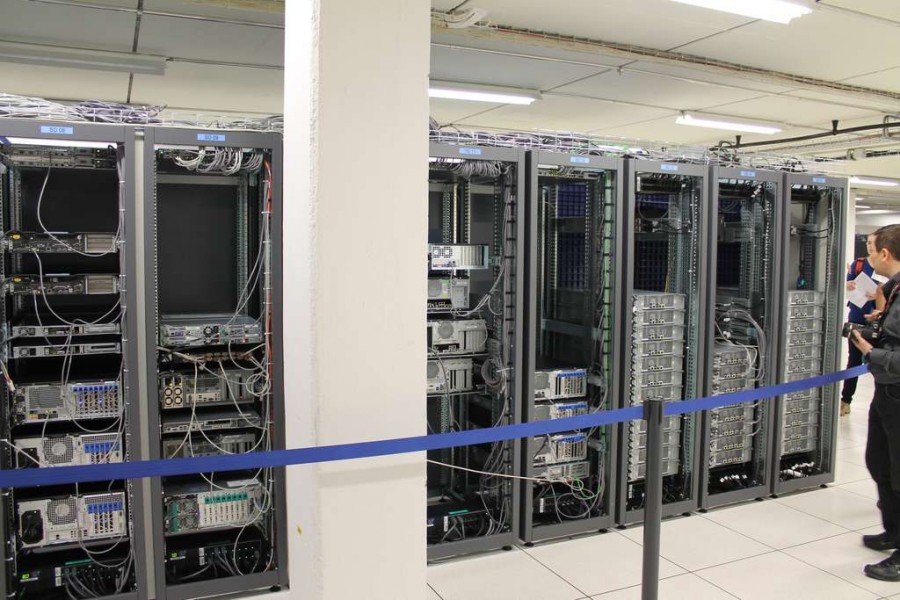
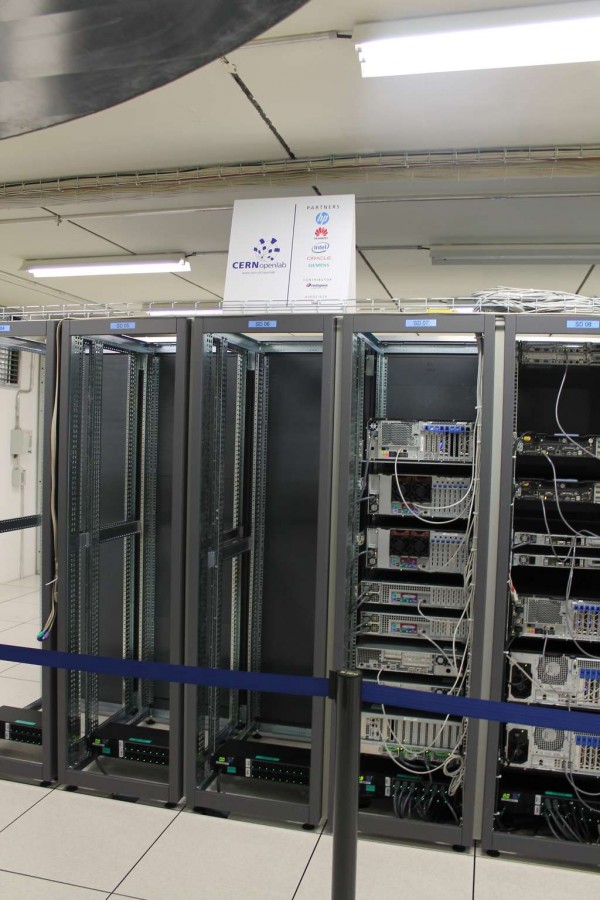
Actually, this hall is not the only hall where the computer technology is located, but the fact that visitors have been allowed at least to have respect for the organizers. I took a picture of what was on the table.
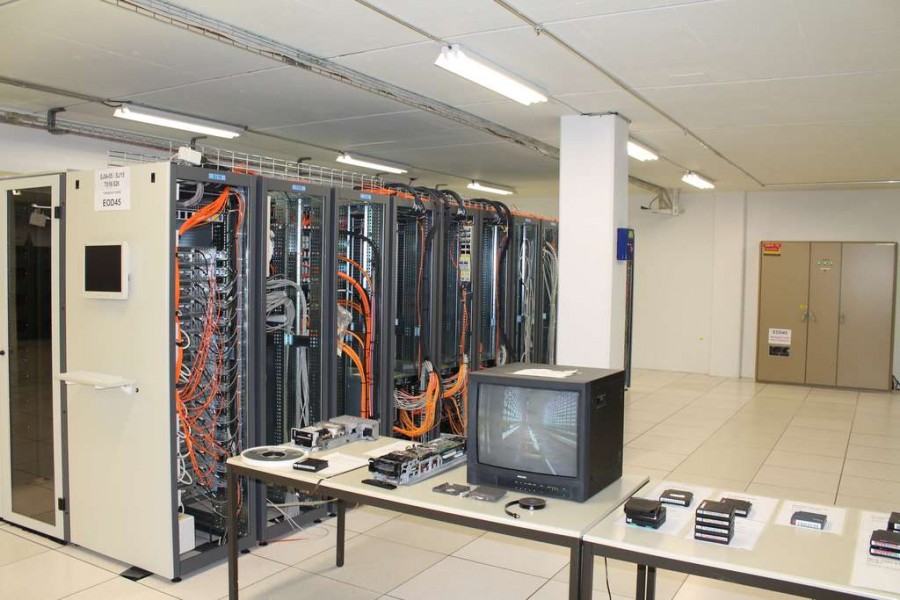
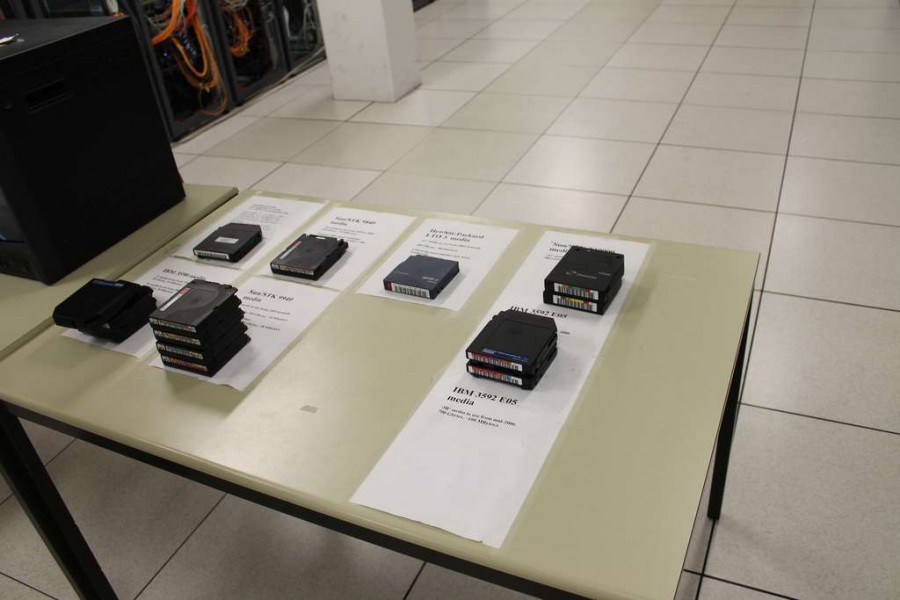
After that, another group of visitors appeared and we were asked to exit. I take the last photo and leave the computer center.
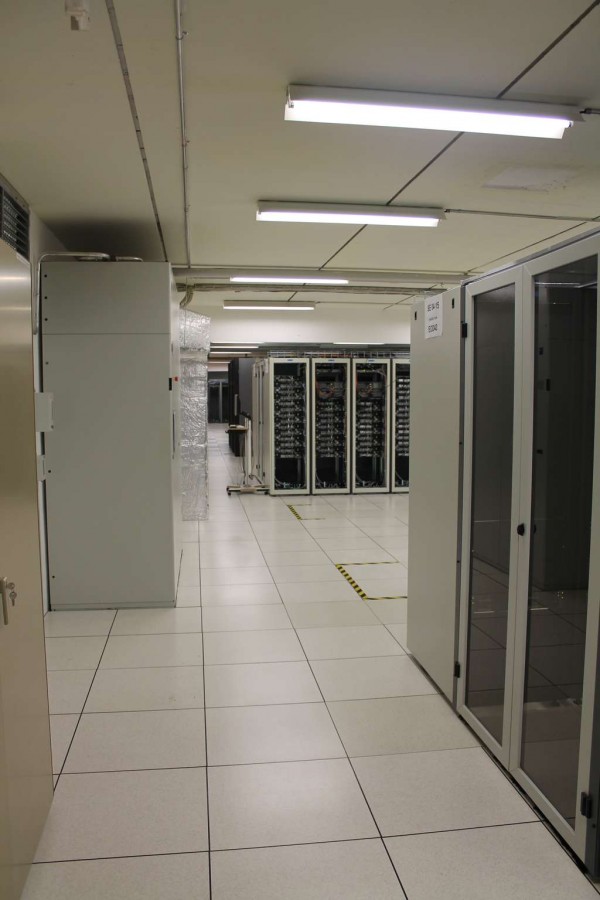
In the next part I will talk about workshops, where unique equipment is created and assembled, which is used in physical experiments.
First part here
Second part here
')
Part 3. Computing Center.
In this part I will tell you about the place where what is the product of CERN is stored and processed - the results of experiments. It will be about the computer center, although it is more correct, probably, to call it a data center. But first, I’ll touch on the computation and data storage issues of CERN. Each year, the Large Hadron Collider alone produces such a large amount of data that if you record it on a CD, you will get a stack 20 kilometers high. This is due to the fact that during the operation of the collider, beams collide 30 million times per second, and each collision causes approximately 20 events, each of which produces a large amount of information in the detector. Of course, this information is processed first in the detector itself, then it goes to the local computing center and only then is transmitted to the main data storage and processing center. However, it takes about a petabyte of data each day. To this we must add the fact that this data must not only be stored but also distributed among research centers around the world, and in addition, it is necessary to maintain approximately 4,000 WiFi network users in CERN itself. It is necessary to add that there is an auxiliary data storage and processing center in Hungary, with which there is a 100 gigabit link. At the same time inside CERN laid 35,000 kilometers of optical cable.
However, such a powerful computer center was not always. The photo shows how the equipment used has changed over time.

Now there has been a transition from mainframe to conventional PC grid. Currently, the center has 90,000 processor cores in 10,000 servers, which operate 24 hours a day, 7 days a week. On average, this grid has 25000 data processing tasks simultaneously. This computing center is at the peak of modern technology and, often, moves computing equipment and IT forward to solve the tasks necessary to store and process such large amounts of data. It is enough to mention that the building located not far from the computing center Tim Berners-Lee was invented by the World Wide Web (tell those
But back to the problem of data storage. The photograph shows that in the

To see how things are going today, I go to the building where the computing center is located.

Surprisingly, there are not very many people there, and I rather quickly go inside. We are shown a small film, and then lead to a locked door. Our guide opens the door and we find ourselves in a fairly large room where there are cabinets with magnetic tapes, on which information is recorded.

Most of the hall is occupied by these same closets.

They contain about 100 petabytes of information (equivalent to 700 years of Full HD video) in 480 million files. Interestingly, approximately 10,000 physicists around the world have access to this information at 160 computing centers. This information contains all the experimental data since the 70s of the last century. If you take a closer look, you can see how these magnetic tapes are located inside the cabinets.

Some racks are processor modules.

On the table is a small exhibition of what is used to store data.

This computing center consumes 3.5 megawatts of electrical energy and has its own diesel generator in case of a power outage. I must also say about the cooling system. It is located outside the building and drives the cold air under the raised floor. Water cooling is used on only a small number of servers.
If you look inside the cabinet, you can see how the automatic sampling and loading of magnetic tapes takes place.

Going further, you can see the rack with other equipment.


Actually, this hall is not the only hall where the computer technology is located, but the fact that visitors have been allowed at least to have respect for the organizers. I took a picture of what was on the table.


After that, another group of visitors appeared and we were asked to exit. I take the last photo and leave the computer center.

In the next part I will talk about workshops, where unique equipment is created and assembled, which is used in physical experiments.
Source: https://habr.com/ru/post/196476/
All Articles